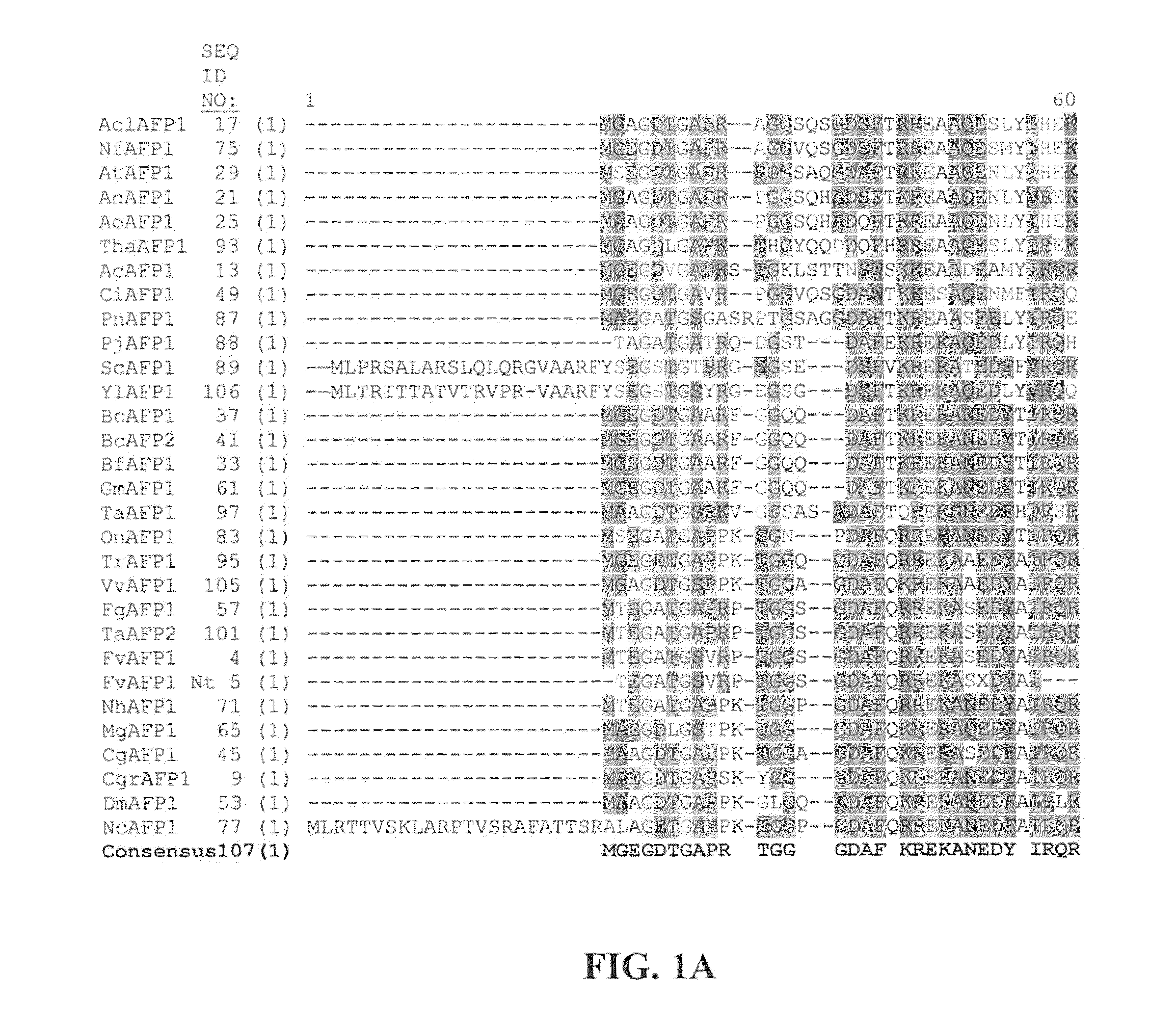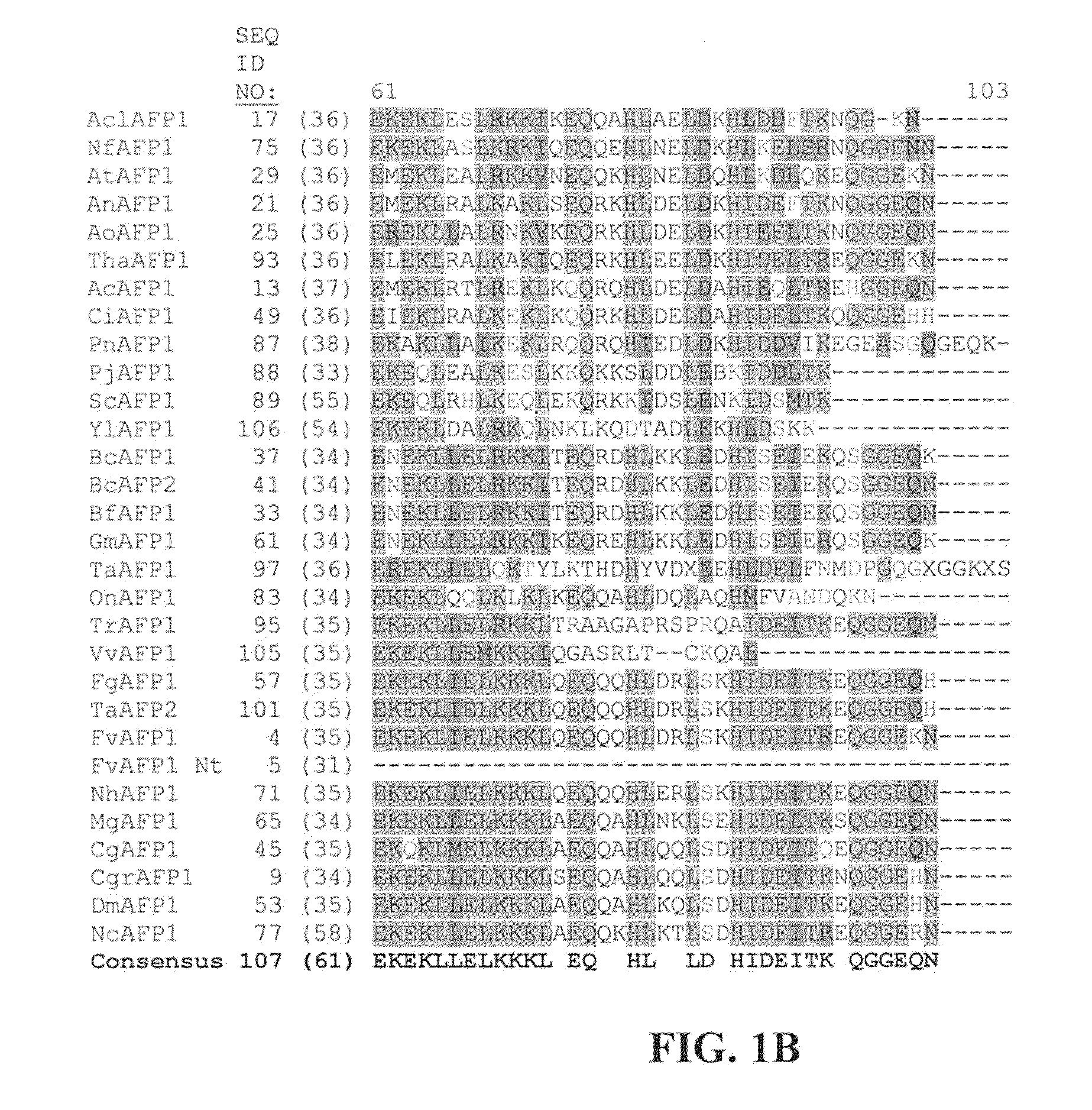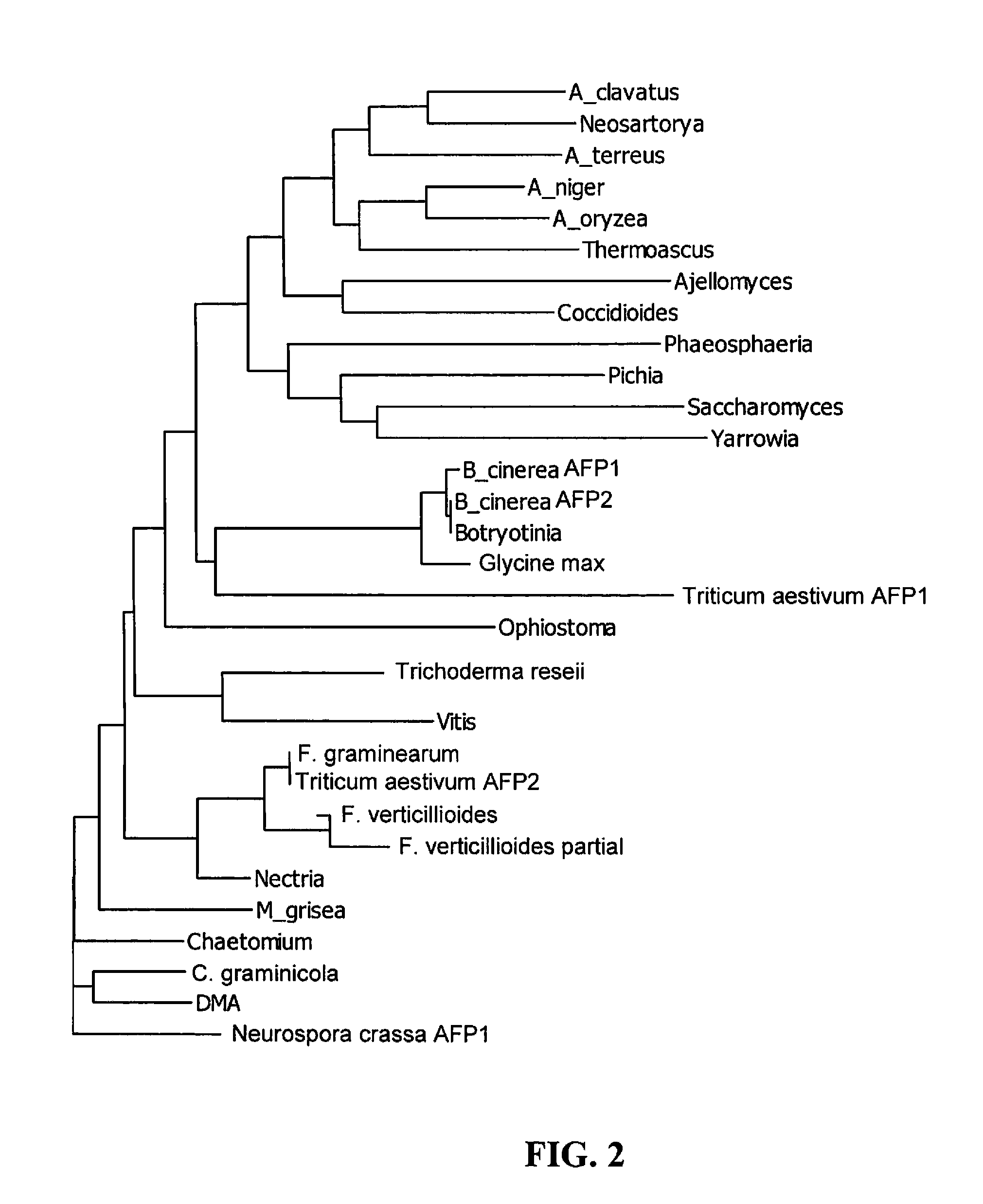Antipathogenic Proteins and Methods of Use
- Summary
- Abstract
- Description
- Claims
- Application Information
AI Technical Summary
Benefits of technology
Problems solved by technology
Method used
Image
Examples
example 1
Isolation of Antifungal Polypeptides from Fusarium verticillioides and Colletotrichum graminicola
[0256]F. verticillioides (FVE) and C. graminicola (CGR) fungal strains were part of an in-house collection. Each isolate (FVE=FM033 and CGR=Eau Claire, Wis.) was grown 4 days at 28° C. in 100 mL of YPD medium (Pioneer recipe 601). Cells were pelleted and rinsed twice in 100 mL of FRIES MS medium. The cell pellets were resuspended in 100 mL of FRIES MS and incubated for three more days at 28° C. Cell pellets were rinsed once in 200 mM CaCl2 then twice in PBS buffer before lyophilization. The lyophilized tissue was extracted with extraction buffer (Y-PER+Complete Protease Inhibitor Cocktail, diluted 1:6 in H2O) at a ratio of 50 mg tissue to 1 mL extraction buffer for at least one hour, with shaking, at 4° C. The lysed cells were pelleted at 14,000 RPM for 15 minutes at 4° C. The supernatants were removed and the extraction was repeated. Supernatants were then pooled.
[0257]Oasis HLB extrac...
example 2
Antifungal Plate Assay
[0265]The antifungal activity of the F. verticillioides and C. graminicola dried fractionated extracts from HPLC against the fungal pathogen Fusarium graminearum (FGR; isolate 73B ISU) are assessed using a standard plate assay.
Preparation of Cultures for Spore Production
[0266]FGR cultures are prepared using ½× oatmeal agar. Cultures of FVE can be prepared using V8 agar plates. Media recipes are provided below.
[0267]Specifically, tubes containing silica-gel fungal stocks stored at −20° C. are briefly flamed, and approximately 5 crystals are sprinkled onto the agar surface. 2-3 plates of each fungal isolate can be prepared. The newly plated cultures are stored in a plastic box to prevent the cultures from drying out. FVE cultures are grown in the dark at room temperature. FGR cultures are grown in an illuminated growth chamber at 27° C. New cultures are prepared every other week to maintain a consistent supply of spores.
Spore Preparation
[0268]Spores are prepared ...
example 3
Transformation and Regeneration of Transgenic Maize Plants
[0276]Immature maize embryos from greenhouse donor plants are bombarded with a plasmid containing a nucleotide sequence encoding the antipathogenic polypeptide set forth in SEQ ID NO: 2, 4, 7, or 9 operably linked to a promoter that drives expression in a maize plant cell and a selectable marker (e.g., the selectable marker gene PAT (Wohlleben et al. (1988) Gene 70:25-37), which confers resistance to the herbicide Bialaphos). Alternatively, the selectable marker gene is provided on a separate plasmid.
[0277]Transformation is performed as follows. Media recipes follow below.
Preparation of Target Tissue
[0278]The ears are husked and surface sterilized in 30% Clorox bleach plus 0.5% Micro detergent for 20 minutes, and rinsed two times with sterile water. The immature embryos are excised and placed embryo axis side down (scutellum side up), 25 embryos per plate, on 560Y medium for 4 hours and then aligned within the 2.5-cm target z...
PUM
| Property | Measurement | Unit |
|---|---|---|
| Fraction | aaaaa | aaaaa |
| Fraction | aaaaa | aaaaa |
| Fraction | aaaaa | aaaaa |
Abstract
Description
Claims
Application Information
 Login to View More
Login to View More - R&D Engineer
- R&D Manager
- IP Professional
- Industry Leading Data Capabilities
- Powerful AI technology
- Patent DNA Extraction
Browse by: Latest US Patents, China's latest patents, Technical Efficacy Thesaurus, Application Domain, Technology Topic, Popular Technical Reports.
© 2024 PatSnap. All rights reserved.Legal|Privacy policy|Modern Slavery Act Transparency Statement|Sitemap|About US| Contact US: help@patsnap.com










